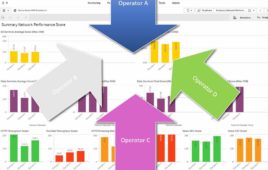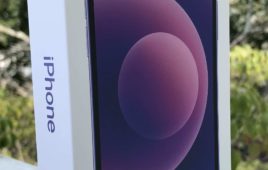Sprint is hitting back against Verizon
Wireless’ suggestions that its forthcoming LTE network will be slower than the
competition because it is launching in a narrower band of spectrum.
“(Verizon Wireless CEO Dan Mead)
alluded to the fact that with a 2×10 MHz versus 2×5 MHz, yes, you will have
differences in peak speed,” Sprint network executive Bob Azzi said at a
Wednesday media briefing, referring to comments made during a keynote session
the previous day, when Mead was said to have pointed out Verizon’s 20 MHz of
spectrum for its LTE network would give it greater speeds than a 10 MHz
deployment, the amount of spectrum currently available to Sprint for its LTE
service.
“We are very confident this dog
will hunt,” Azzi said. “This will be a very good experience for our
customers.”
Sprint has repeatedly said its LTE
network will be on par with the competition but has shied away from providing
specific data rates.
Iyad Tarazi, vice president of network
development and engineering, again declined to say how fast Sprint’s LTE
network would be, but said customers wouldn’t be able to distinguish between
Sprint’s service and the service of its competitors.
“You will see a really competitive performance,”
he said during the briefing.
Verizon markets its LTE network as
having average speeds of between 5-12 Mbps on the downlink. Tarazi said last
fall that Sprint’s planned LTE Advanced network could beat Verizon’s LTE data
rates when it launches next year. He did not repeat the statement during the Wednesday
event.
Sprint’s initial LTE deployment will run
on its 1900 MHz holdings, giving it just two 5 MHz channels for the service. It
plans to eventually use its 800 MHz spectrum to beef up its LTE pipe once the
iDEN shutdown completes, but the strategy must first be approved by the FCC.
Azzi said Sprint’s 800 MHz spectrum may
not come into play until 2014, though the strategy could become viable as early
as next year. A delay with the 800 MHz spectrum would push out its LTE Advanced
deployment.
Sprint also plans to use Clearwire’s
still-unbuilt TD-LTE service to supplement the capacity of its network and will
eventually move to LTE Advanced.
Sprint says it will launch in six major
cities by mid-year including Dallas, Atlanta, Houston and San Antonio.
Sprint is ripping out its old gear and
replacing it with new equipment from Alcatel-Lucent, Ericsson and Samsung.
About 700 of the new sites are live and construction is under way on 3,000
sites, Azzi said.
“Everything’s ready to go from a
technology perspective – we won’t have any hiccups from things that don’t work
and could be impactful across large parts of the country,” he said.
The new infrastructure will
significantly improve Sprint’s coverage and capacity, with “major
reductions in in-footprint roaming, drops and blocks, latency and
stutter.”




